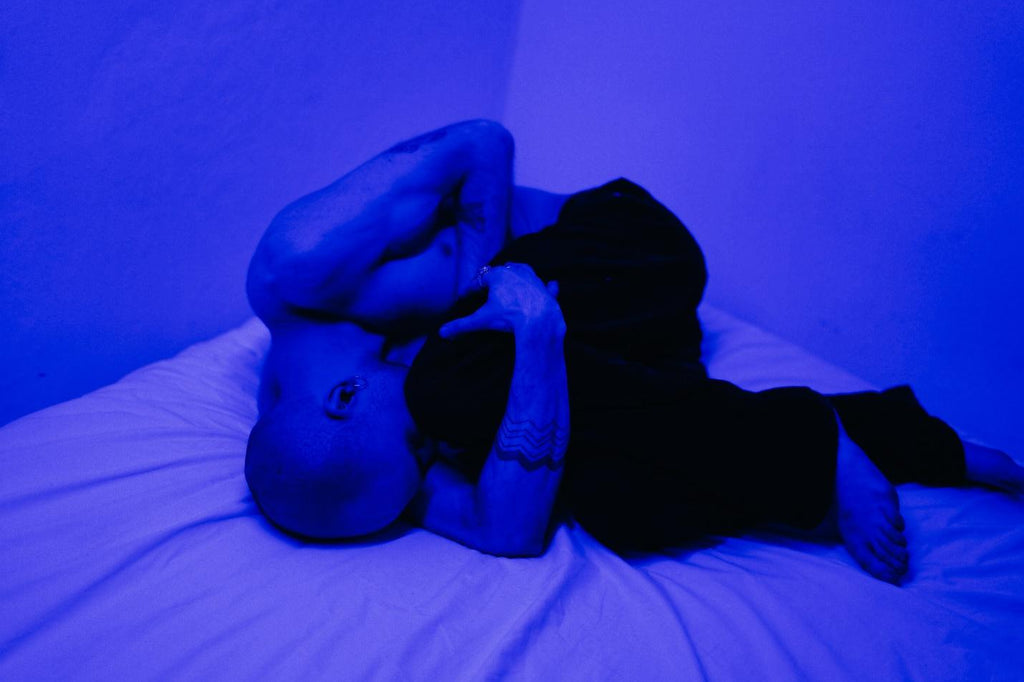Are you worried your hemorrhoids have become thrombosed? Do you want to know how long thrombosed external hemorrhoids last? They don't always require treatment and go away on their own. But, before we discuss the recovery from thrombosed hemorrhoids, let's talk about the symptoms of thrombosed hemorrhoids.
Thrombosed External Hemorrhoids
Thrombosed hemorrhoids occur due to blood clots and progress from chronic internal and external hemorrhoids. Hemorrhoids are structures consisting of veins, connective tissue, and smooth muscles which form the anal cushion around the anus. These structures can swell up due to inflammation of the hemorrhoidal veins.
Swollen hemorrhoidal veins inside the anus are called internal hemorrhoids. On the other hand, swollen veins or lumps outside the anus are called external hemorrhoids.
Thrombosed external hemorrhoids can swell up and protrude outside the anus. Generally, chronic external hemorrhoids develop into thrombosed hemorrhoids. Blood clots in hemorrhoidal veins cause thrombosed hemorrhoids to form.
Causes of Thrombosed Hemorrhoids
Hemorrhoids are caused when pressure from trauma causes inflammation in hemorrhoidal veins. This causes the hemorrhoidal structures to swell up and form lumps. These lumps and dilated hemorrhoidal veins increase blood flow in the structure, increasing the chances of clots.
Untreated chronic hemorrhoids are at risk of developing blood clots. The blood flow is obstructed when clots form and the swollen lumps increase in size. This causes increased pressure inside the veins of the anus and results in severe pain. Thrombosed external hemorrhoids cause extreme discomfort to affected individuals.
Old age puts you at a higher risk of developing thrombosed external hemorrhoids since the connective tissue supporting the veins loses its tone and elasticity. Causes of thrombosed hemorrhoids also include:
- Anal Intercourse
- Obesity
- Pregnancy
- Strained bowel movements
- Severe injury to the anal region
All these factors can contribute to increased pressure in the lower rectum, damaging hemorrhoidal structures. Consequently, having a history of hemorrhoidal disease puts a person at risk of developing thrombosed external hemorrhoids.
Symptoms of Thrombosed Hemorrhoids
The most common symptom for all types of hemorrhoids is rectal bleeding. Clotting obstructs normal blood flow and can cause increased swelling of hemorrhoidal structures and veins. The swollen hemorrhoid will also appear red in color because of the underlying clots. Increased pressure from the clots can lead to splitting of skin and bloody drainage of the lump.
Thrombosed external hemorrhoids cause more severe symptoms than internal and external hemorrhoids. Symptoms of thrombosed hemorrhoids also include severe pain and burning during bowel movements, intense itching, and irritation around the anal region.
Recovery from Thrombosed Hemorrhoids
Many thrombosed hemorrhoids go away on their own without requiring surgery. A thrombosed external hemorrhoid causes severe pain and discomfort. If the pain improves within the first 7-10 days, the thrombosed hemorrhoid will go away on its own within two to three weeks and won't require surgery.
You can use a few simple home remedies to help relieve the pain faster. These include taking a Sitz bath to clean the anal region, using over-the-counter pain-relieving medicine like ibuprofen and acetaminophen, and using stool-softeners to help reduce strained bowel movements.
A painful anal lump may be felt when a thrombosed hemorrhoid initially forms. Over the next few days, pressure from the clot can cause the splitting of skin and drainage of the lump. The ruptured hemorrhoid will begin to bleed, but it is not a cause for concern. Drainage decreases the size of the anal lump and can improve the painful symptoms.
Even though hemorrhoidal swelling can go back to normal, the hemorrhoids do not permanently go away. There’s still a chance of recurrence, especially in old age.
When the pressure does not cause the hemorrhoid to rupture, the body has a chance to reabsorb the clotted blood within a few days to a couple of weeks. Complications can occur if the body fails to reabsorb the thrombus or blood clot.
Failure to reabsorb the clot can cause prolonged periods of obstructed blood flow. This can increase the chances of the hemorrhoids becoming strangulated. Ulceration and necrosis of the skin around the anal region can cause perianal abscesses and fistulas.
If the thrombosed hemorrhoids enlarge beyond a certain extent, surgery may be required to remove them. Some standard treatment plans include a hemorrhoidectomy, rubber-band ligations, and stapled hemorrhoidopexy.
Hemorrhoidectomy is a sure-shot way to permanently remove the hemorrhoid. After administering a local or general anesthetic, the doctor removes the hemorrhoid along with the blood clot. The surgery makes it less likely for the hemorrhoid to reoccur.
Having the procedure done within three days of the appearance of a thrombosed hemorrhoid can help alleviate the pain and other associated symptoms. There are certain side effects of a hemorrhoidectomy, such as pain, urinary tract infections (UTIs), and trouble emptying the bladder, so it is only recommended for the most severe and painful hemorrhoids.
It should also be noted that less than 10% of affected individuals require surgery, and in most cases, the hemorrhoids slowly go away on their own.
Summary
Thrombosed external hemorrhoids are rare and develop from chronic hemorrhoidal disease. Common symptoms of thrombosed hemorrhoids include itching, irritation, and rectal bleeding. They can be caused by increased intra-abdominal pressure, low-fiber diets, and strained bowel movements.
Thrombosed external hemorrhoids usually go away on their own and reduce in size in a couple of weeks, while pain-related symptoms resolve in 7-10 days. Over-the-counter painkillers can help speed up the process. In some cases, doctors suggest the surgical removal of severely painful hemorrhoids.
We hope you now know the causes and symptoms of thrombosed hemorrhoids and how long they typically last. For more information and correct diagnosis, consult your local colorectal doctor.

